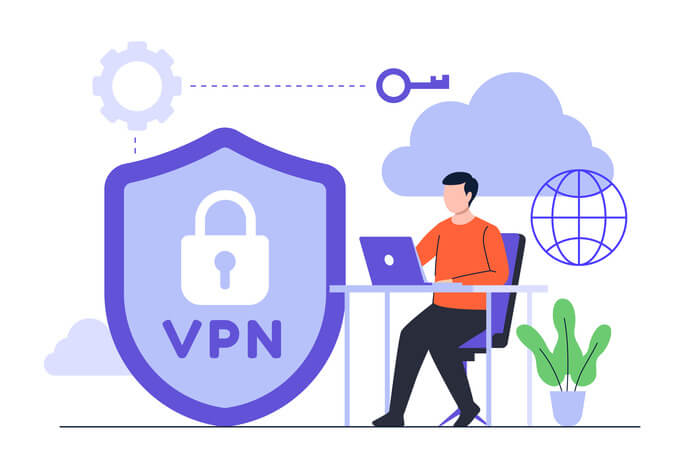What is
My IP Address

Your IP Address is:
IPv4: 216.73.216.111
What is an IP Address?
An IP (Internet Protocol) address is a unique numerical identifier assigned to every device connected to a computer network that uses the Internet Protocol for communication. These addresses play a crucial role in directing data packets to their intended destinations on the internet, serving as the digital equivalent of a postal address for devices. IPv4, the older version of IP addresses, uses a format like “192.168.1.1,” while IPv6, the newer version, employs a more extensive hexadecimal format to accommodate the ever-expanding number of internet-connected devices. IP addresses are essential for the functioning of the internet, enabling seamless communication across global networks.
Private IP Address
A private IP address is a specific type of IP address used within a local network, such as a home or business network, to distinguish devices within that network. Unlike public IP addresses, which are unique and globally accessible, private IP addresses are not directly accessible from the internet. They serve as internal identifiers, allowing devices within the same network to communicate with each other and share resources, like files or printers. Commonly used private IP address ranges include 192.168.x.x, 10.x.x.x, and 172.16.x.x to 172.31.x.x. Private IP addresses play a vital role in network security and organization by providing a level of isolation from the external internet while facilitating local network operations.
DNS and VPN

DNS (Domain Name System) and VPN (Virtual Private Network) are essential components of modern internet security and connectivity. DNS acts as the internet’s address book, translating user-friendly domain names (e.g., www.example.com) into the numeric IP addresses computers understand. It plays a vital role in web browsing and internet navigation. On the other hand, a VPN is a secure network that extends across a public or shared network, allowing users to send and receive data as if their devices were directly connected to a private network. VPNs enhance online privacy and security by encrypting internet traffic, making it harder for third parties to intercept or monitor. In combination, DNS and VPN services can provide an extra layer of security and privacy, ensuring that online activities are both confidential and reliable.
IPV4 and IPV6
IPv4 (Internet Protocol version 4) and IPv6 (Internet Protocol version 6) are two generations of internet protocols. IPv4, the older version, uses 32-bit addresses, allowing for approximately 4.3 billion unique addresses. It has been the foundation of the internet for decades but is running out of available addresses due to the explosive growth of internet-connected devices.
IPv6, designed as the solution to IPv4’s address exhaustion, uses 128-bit addresses, providing an astronomically vast number of unique addresses (about 340 undecillion). It offers improved security, efficiency, and support for the ever-expanding Internet of Things (IoT). While IPv6 adoption is gradually increasing, both versions coexist in the transition period. IPv4 and IPv6 play critical roles in ensuring the continued growth and functionality of the internet, with IPv6 serving as its long-term future.
How does a public IP address work?
A public IP address is a crucial element of Internet communication. It serves as the unique identifier for a device or network on the global internet. When you send a request to a website, your device’s public IP address is used to locate it among the billions of devices connected worldwide. The process begins with your request being sent to a DNS (Domain Name System) server, which translates the user-friendly domain name into the corresponding public IP address. Once the destination’s public IP is determined, data packets are routed through various network infrastructure elements, including routers and switches, using this address as a destination marker. The recipient’s network recognizes the incoming packets based on the public IP address and forwards them to the intended device, allowing for a seamless exchange of information over the vast internet. Public IP addresses are indispensable for the functioning of the global internet, enabling devices to find and communicate with each other across the digital landscape.

Static vs Dynamic IP Addresses
Static and dynamic IP addresses are two methods of assigning and managing IP addresses in a network. Static IP addresses are fixed and manually configured for devices. They provide consistency and are ideal for servers and network devices requiring permanent, easily identifiable addresses. Dynamic IP addresses, on the other hand, are assigned automatically by a DHCP server when a device connects to the network. They are temporary, which can be more efficient for large networks, as they can be reused when devices disconnect. Dynamic IPs simplify network administration but are less predictable than static IPs. The choice depends on the specific needs of the network and its devices.
Frequently Asked Questions
-
How do I find my IP address?
To discover your public IP address, simply open this webpage in any web browser, and it will provide details such as your IPv4 or IPv6 address, IP location, hostname, and user agent. Alternatively, for manual IP address verification, connect to a WiFi network, and access your device's Network Settings menu, where your IP address should be visible. Most devices and operating systems offer this feature.
-
Do IP addresses change?
Yes, IP addresses can change. Internet Service Providers (ISPs) can assign dynamic IP addresses that change periodically when a device reconnects to the Internet. However, static IP addresses remain constant unless manually reconfigured.
-
What makes an IP address important?
An IP address is essential because it uniquely identifies devices on a network, enabling data routing and communication on the internet. It allows devices to locate and interact with each other, making the internet and networked systems function seamlessly.

